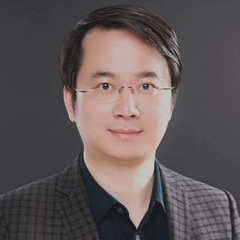Group IV Photonics: Advances and Applications
A special issue of Photonics (ISSN 2304-6732).
Deadline for manuscript submissions: 10 September 2024 | Viewed by 1385
Special Issue Editors
Interests: integrated nanophotonics; integrated nano optoelectronics; intelligent photonics; silicon photonics; plasmonics; metasurface; photonic sensor; photovoltaics; solid state lidar
Interests: silicon photonics; phase change material for photonic devices; III-V and silicon hybrid integration
Special Issues, Collections and Topics in MDPI journals
Interests: silicon photonics; photonic integrated circuits
Interests: optical devices; optical measurements; measurement automation; machine learning
Special Issue Information
Dear Colleagues,
The aim of this Special Issue is to provide a comprehensive overview of the recent advances and applications of Group IV photonics. The scope of this issue will encompass the following topics: the development of Group IV photonic devices and materials; optoelectronic properties of Group IV devices and systems; the integration of Group IV materials in photonic devices; light sources on silicon; applications of Group IV photonics in various fields such as telecommunications, sensing, data storage, renewable energy, and biomedicine; programmable photonics; silicon photonics; foundry and manufacturing; integrated quantum photonics; and artificial intelligence chip.
Below are some additional details to consider for this Special Issue:
Introduction: The introduction of the Special Issue can provide a brief overview of Group IV photonics, including its history, current status, and future prospects. It can also highlight the need for continued research and development in this field.
Device Development: This section can focus on the recent advances in the development of Group IV photonic devices, including the design, fabrication, and characterization of these devices. Topics can include the development of Group IV photonic materials, such as silicon, germanium, and carbon; and the optimization of their optoelectronic properties for photonic applications.
Integration: This section can address the challenges and solutions for the integration of Group IV materials in photonic devices. Topics can include the integration of Group IV materials with other materials, such as metals and dielectrics, and the design and fabrication of monolithic photonic integrated circuits.
Applications: This section can explore the various applications of Group IV photonics in fields such as telecommunications, sensing, data storage, renewable energy, and biomedicine. Topics can include the use of Group IV photonics for high-speed data communication, the development of photonic sensors for environmental and biomedical applications, and the integration of Group IV photonics in renewable energy systems.
Prof. Dr. Alex Yasha Yi
Prof. Dr. Linjie Zhou
Prof. Dr. Daoxin Dai
Dr. Barry James Koch
Dr. Yan Cai
Guest Editors
Manuscript Submission Information
Manuscripts should be submitted online at www.mdpi.com by registering and logging in to this website. Once you are registered, click here to go to the submission form. Manuscripts can be submitted until the deadline. All submissions that pass pre-check are peer-reviewed. Accepted papers will be published continuously in the journal (as soon as accepted) and will be listed together on the special issue website. Research articles, review articles as well as short communications are invited. For planned papers, a title and short abstract (about 100 words) can be sent to the Editorial Office for announcement on this website.
Submitted manuscripts should not have been published previously, nor be under consideration for publication elsewhere (except conference proceedings papers). All manuscripts are thoroughly refereed through a single-blind peer-review process. A guide for authors and other relevant information for submission of manuscripts is available on the Instructions for Authors page. Photonics is an international peer-reviewed open access monthly journal published by MDPI.
Please visit the Instructions for Authors page before submitting a manuscript. The Article Processing Charge (APC) for publication in this open access journal is 2400 CHF (Swiss Francs). Submitted papers should be well formatted and use good English. Authors may use MDPI's English editing service prior to publication or during author revisions.
Keywords
- group IV photonics
- optoelectronics
- integration
- photonic devices
- silicon photonics
- germanium photonics
- carbon photonics
- renewable energy
- biomedicine
- data storage
- programmable photonics
- silicon photonics
- foundry and manufacturing
- integrated quantum photonics
- artificial intelligence chip









